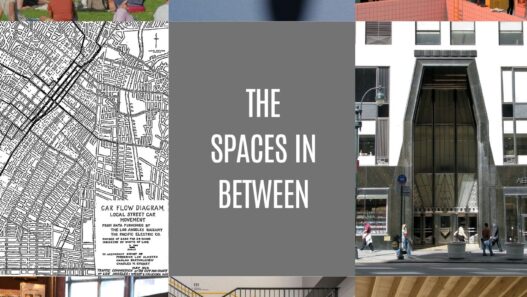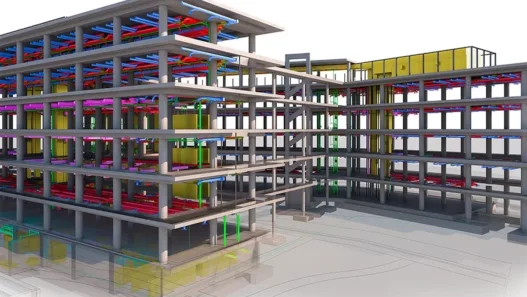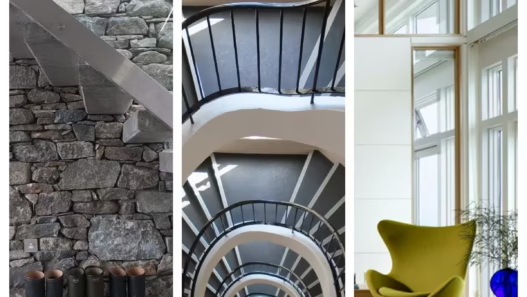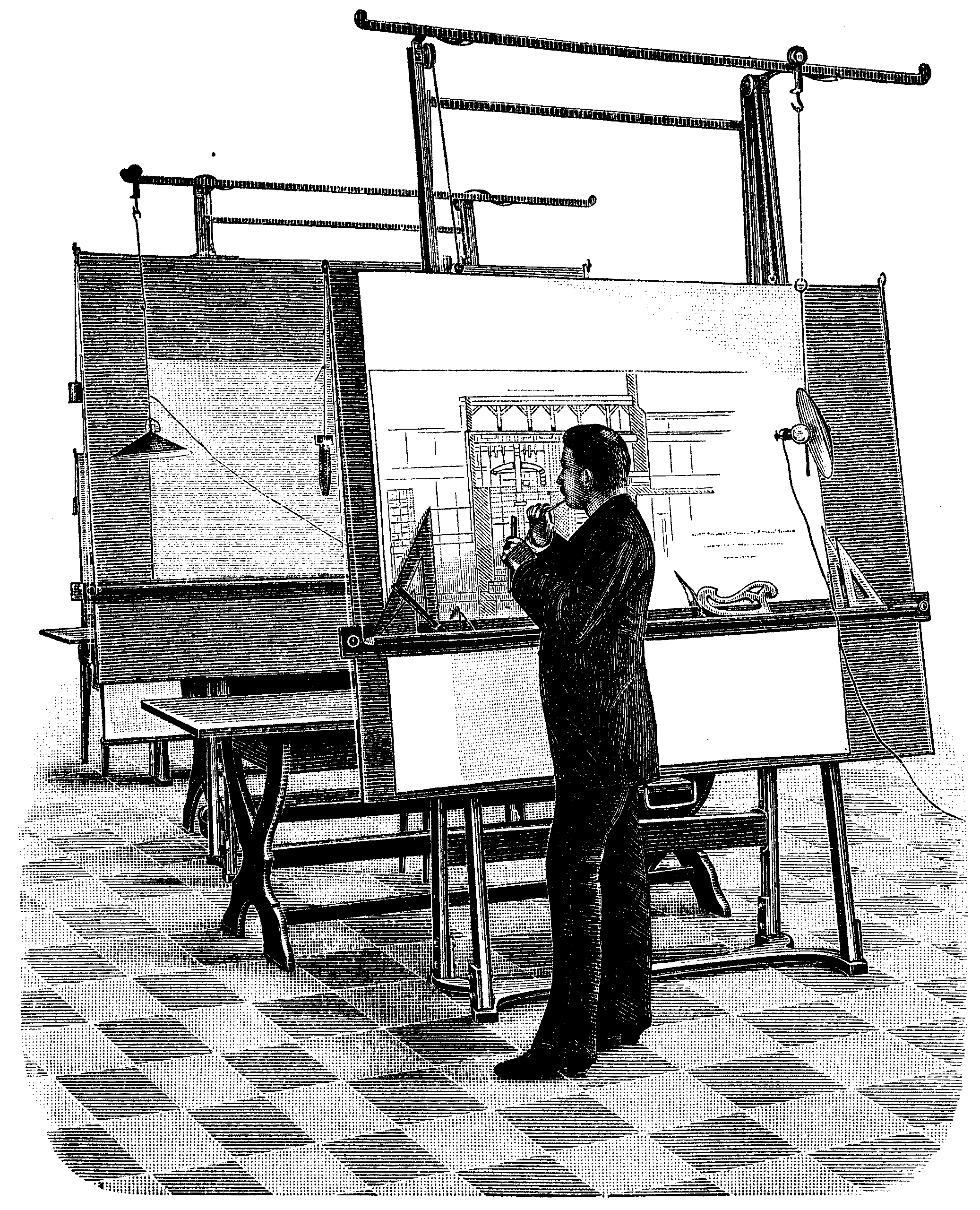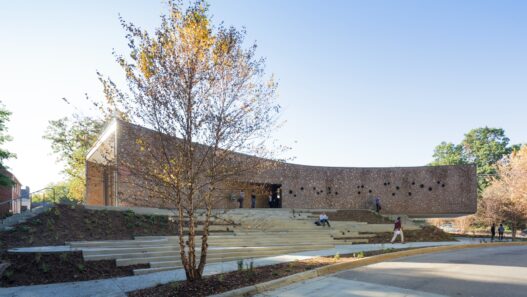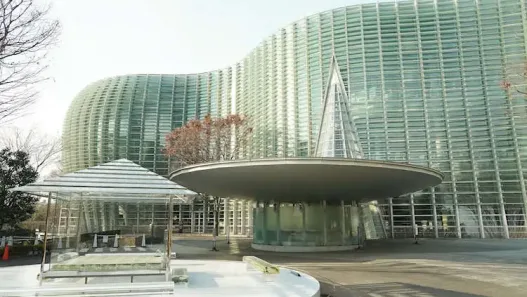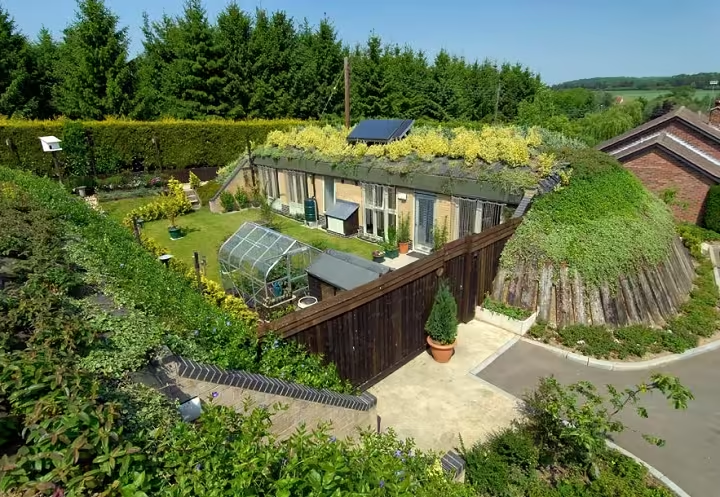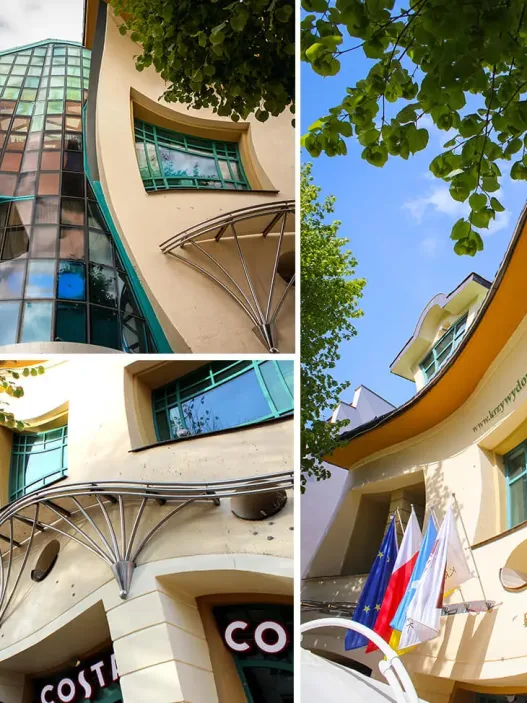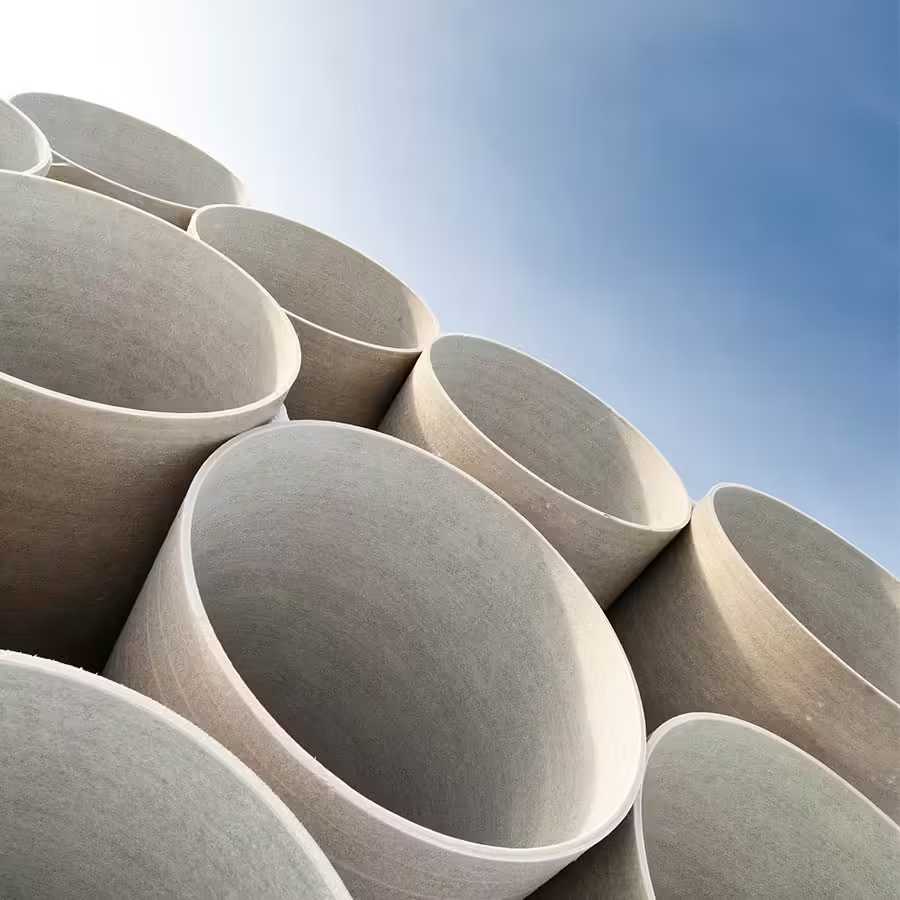The National Art Center Tokyo (NACT) is a beacon of contemporary art and architectural innovation in the heart of the Japanese capital. Opened in 2007, this unique institution, rather than a traditional museum, serves as a dynamic space dedicated to the exhibition of contemporary art and provides a platform for artists to showcase their work.
- Architect: The Tokyo National Arts Center was designed by renowned architect Kenzō Tange.
- Year of completion: The center was completed in 2007.
- Architectural style: The design features a unique blend of modernism and traditional Japanese aesthetics.
- Building concept: The building is designed without permanent exhibition spaces, allowing flexible presentation of various art forms.
- Curved glass facade: The building is characterized by its undulating glass facade, which creates a sense of fluidity and connection with the environment.
- Cultural significance: The National Arts Center serves as a platform for contemporary art, presenting various exhibitions by Japanese and international artists.
- Unique design: The interior features open spaces that encourage visitor interaction and engagement, and enhance the overall cultural experience.
- Sustainability features: The design incorporates environmentally friendly elements, including natural lighting and efficient climate control systems.
- Public accessibility: The Center is committed to accessibility, providing facilities and programs for visitors of all abilities.
- Visitor experience: the Tokyo National Art Center offers a dynamic cultural experience with rotating exhibitions, educational programs and a café that invites visitors to relax and reflect.
With its distinctive design and commitment to the arts, NACT plays an important role in Japan’s cultural landscape, attracting both local and international visitors.
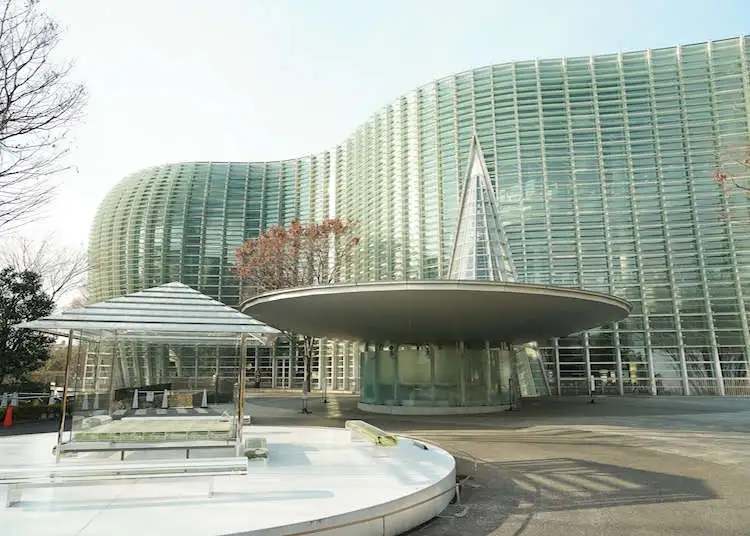
Building overview
The Tokyo National Art Center is striking and unusual. It features a series of undulating glass and concrete forms that create a fluid, open environment. Designed by renowned architect Kengo Kuma, the building emphasizes transparency and light, blurring the boundaries between the interior and the surrounding urban landscape. Freed from permanent collections, the spacious galleries allow for constantly evolving exhibitions, inviting visitors to engage with new artistic expressions.
The entrance to NACT is marked by a wide ramp that draws visitors into the heart of the building. Inside, the layout is flexible, accommodating a variety of exhibitions, performances and events. The use of natural light is an important element of the design, with large windows and skylights illuminating the artworks on display. This careful integration of architecture and art creates a serene atmosphere that encourages discovery and contemplation.
Historical context
To understand the significance of the Tokyo National Art Center, it is essential to examine its historical context. Founded at a time of rapid globalization and artistic experimentation, NACT emerged as a response to the burgeoning contemporary art scene in Japan and beyond. The center was designed to fill a gap in existing cultural institutions, providing a space dedicated solely to temporary exhibitions, unlike traditional museums which often maintain permanent collections.
In the early 2000s, Japan was grappling with its own identity in a globalized world, and NACT was conceived as a space reflecting and supporting this dialogue. By presenting Japanese and international artists, it aims to stimulate creativity and support new artistic practices. This commitment to inclusion and innovation sets NACT apart from other arts organizations in the country.
Architectural vision
The architectural vision of the Tokyo National Art Center reflects a deep understanding of space and its impact on the viewer’s experience. Kengo Kuma’s design philosophy emphasizes harmony with the natural environment, using materials that reflect traditional Japanese aesthetics while embracing modern techniques. The building’s flowing forms mimic the organic shapes found in nature, creating a sense of calm amidst urban chaos.
Kuma’s approach to architecture is deeply rooted in the idea of “ma”, a Japanese term that refers to the concept of space and interval. This principle is evident in the design of NACT, where voids and transitions between spaces encourage movement and interaction. The building invites visitors not only to observe the art, but also to interact with the space itself, so that the experience is as much about the architecture as the exhibitions.
Importance in Japanese architecture
The Tokyo National Arts Centre occupies an important place in the history of contemporary Japanese architecture. It represents a departure from the rigid, box-like structures that dominate the architectural landscape, in favor of a more experimental, fluid approach to design. NACT has inspired a new generation of architects to explore the relationship between space, light and the human experience.
NACT also represents a blend of traditional Japanese values and modern sensibilities. Its emphasis on transparency and connection with the environment is in keeping with Japan’s deep-rooted architectural traditions, while its innovative design and use of contemporary materials reflect the country’s avant-garde spirit. The center, which has become a symbol of architectural excellence, has attracted national and international attention and acclaim.
The visitor experience
Visiting the Tokyo National Art Center is not just about admiring art, it’s an immersive experience that stimulates all the senses. From the moment they enter, visitors are enveloped in a tranquil atmosphere that invites exploration. The absence of permanent installations means that each visit can reveal something new, encouraging visitors to return to discover the latest exhibitions.
The building’s layout reinforces this experience, with open galleries that allow visitors to move seamlessly from one exhibition to the next. Visitors lose track of time as they move from one space to the next, each offering a unique perspective on contemporary art. The integration of outdoor spaces such as gardens and terraces offers moments of repose in the midst of the artistic journey, allowing visitors to reflect and connect with nature.
Educational programs and workshops further enrich the visitor experience, providing a deeper understanding of art and the artists behind it. The Tokyo National Art Center is an essential destination for all those interested in the evolving dialogue of contemporary art in Japan, not only as an art venue but also as a dynamic center of creativity and cultural exchange.
Architectural design and features
Architectural design is a fascinating blend of art and science, where creativity meets functionality. It encompasses everything from the contours of buildings to the intricate details that make spaces welcoming and pleasant to live in. When we explore architectural design, we discover a world rich in history, culture and innovation. Whether outside or inside, each element plays an important role in creating environments that enrich our daily lives.
Exterior design elements
A building’s façade is its first impression. It reflects not only the building’s function, but also its relationship with its surroundings. Architects take into account various elements such as form, color and material to create a design that is harmonious with its context. For example, a modern glass skyscraper may contrast sharply with a historic brick building, but both can coexist beautifully in an urban landscape.
The key concepts in exterior design are symmetry, proportion and texture. Symmetry often gives a sense of balance and order, while proportion expresses the relationship between different elements, giving a sense of harmony to the building. Texture adds depth and interest, making surfaces more attractive. The Sydney Opera House is a good example: the sail-like roof structure not only serves a functional purpose, it also creates a sculptural landmark in harmony with its waterfront location.
Concrete applications of these concepts can be seen in a variety of architectural styles, from the minimalist designs of Scandinavian architecture, with its emphasis on clean lines and natural materials, to the ornamental details of Baroque buildings, which emphasize craftsmanship and art. Every choice made in terms of exterior design contributes to the way a building is perceived and experienced by its occupants and the public.
Interior layout and flow
Once inside a building, the interior layout becomes crucial in determining how people interact with the space. A well-thought-out interior not only facilitates movement, but also enhances the overall experience. The fluidity of a space can be influenced by the layout of rooms, the size of doors and the placement of furniture.
The key concepts in interior design are functionality, accessibility and aesthetics. Functionality ensures that spaces perform their function efficiently. In the home, for example, the kitchen is often designed to promote efficiency by facilitating access to appliances and storage. Accessibility is very important in public buildings, where disabled people must be taken into account in the design. Aesthetics also play an important role; the choice of colors, materials and furniture can create a welcoming atmosphere.
Open-plan living spaces, which encourage interaction and circulation between family members, are a perfect example of thoughtful interior design. Conversely, traditional layouts with separate rooms can offer privacy and separation to suit different lifestyles and preferences. Understanding how these elements work together helps architects create environments that are both functional and welcoming.
Building materials and techniques
The choice of materials and construction techniques has a considerable influence on the aesthetics and performance of a building. Materials give character to a building and can influence its durability. Traditional materials such as wood and stone evoke a sense of timelessness, while modern materials such as steel and glass can create striking contemporary designs.
Construction techniques are equally important, as they determine how well a building withstands environmental challenges. For example, buildings in earthquake-prone areas often use flexible materials and innovative engineering methods to absorb shocks. The use of prefabrication techniques has also gained in popularity, helping to shorten construction times and reduce waste.
An inspiring example can be found in the use of rammed earth construction, which not only uses natural materials but also provides excellent thermal insulation. This technique combines durability and aesthetics, showing that materials can be both beautiful and functional.
Sustainable practices
Sustainability has become a cornerstone of modern architectural design. With growing awareness of environmental issues, architects are increasingly tasked with creating buildings that minimize their ecological footprint. This involves not only the selection of sustainable materials, but also the integration of energy-efficient systems and renewable energy sources.
Key concepts in sustainable architecture include passive design that maximizes natural light and ventilation, and green roofs that help insulate buildings while encouraging biodiversity. For example, Bosco Verticale in Milan features vertical gardens that improve air quality and provide a habitat for flora and fauna.
Concrete applications of sustainable practices are evident in many new buildings. Often referred to as the world’s greenest commercial building, Seattle’s Bullitt Centre incorporates a range of environmentally-friendly technologies, including rainwater harvesting and solar power. These innovations show how architecture can pave the way for a more sustainable future, and inspire other projects around the world.
Art installations and exhibitions
Art plays an essential role in architecture, transforming spaces and enriching the human experience. Art installations can take many forms, from the sculptures that adorn a building’s entrance to the murals that bring interior walls to life. These elements invite creativity and provoke thought, making architecture not just a physical structure, but also a canvas for expression.
Integrating art into architecture can enhance the emotional impact of a space. For example, the Guggenheim Museum in Bilbao, designed by Frank Gehry, is not only an architectural marvel, but also a cultural landmark that attracts visitors from all over the world. Its fluid forms and innovative use of materials create a dialogue between art and architecture.
Exhibitions, such as installations in public squares or temporary art shows in galleries, enable communities to interact with culture in an accessible way. This interaction fosters a sense of belonging and encourages dialogue between residents. By combining artistic elements, architects can create spaces that resonate deeply with people, transforming architecture into an experience rather than a backdrop.
Ultimately, architectural design is a complex tapestry woven from a variety of elements, each contributing to the overall narrative of a space. From exterior aesthetics to interior fluidity, from materials to sustainability and the infusion of art, each decision shapes the way we live and interact with our built environment. As we continue to explore the possibilities of architecture, we discover its profound impact on our lives, our societies and our planet.
3) The concept of “wave” in architecture
Architecture is not just about creating functional spaces, but also about evoking emotions and inspiring thoughts through design. One of the most fascinating concepts in architecture is that of “waves”. This concept is inspired by nature, where waves symbolize movement, rhythm and fluidity. In architecture, waves can manifest themselves through shapes, materials and spatial arrangements, creating a sense of harmony and connection with the environment.
The inspiration behind the concept
Waves in architecture are often inspired by the natural world. Observing ocean waves can evoke a profound sense of peace and dynamism. Architects draw inspiration from these organic forms to create buildings in harmony with the environment. For example, the undulating forms of waves can represent the ebb and flow of life, reminding us of our connection with nature. This natural inspiration can lead to designs that mimic the gentle rise and fall of waves, effectively merging the built environment with the landscape.
Notable examples include the Sydney Opera House, whose sail-like structures evoke the image of waves on water. This architectural marvel uses the concept of waves not only in its form, but also in its interaction with the harbour and the urban landscape.
Wave symbolism
Waves carry a rich symbolism in various cultures, often representing change, movement and the passage of time. In architecture, this symbolism can take on multiple meanings. A building designed with undulating forms can symbolize fluidity and adaptability, signifying openness to change and evolution. This is particularly important in today’s world, where structures must adapt to different needs and contexts.
Waves can also represent unity and continuity. When a building flows like a wave, it can create a seamless connection between different spaces, encouraging movement and interaction. This symbolic link can foster a sense of community and belonging among inhabitants, making architecture not just a physical structure, but also part of the social fabric.
Application to design
Applying wave concepts to design requires a meticulous approach to materials, shapes and structures. Architects often use advanced technologies and software to create fluid, organic forms that mimic the natural curves of waves. Materials such as glass and metal are often used to enhance the aesthetics of fluidity, allowing light to play over surfaces and creating dynamic reflections that evoke a sense of movement.
The Heydar Aliyev Center in Baku, Azerbaijan, designed by Zaha Hadid, is a notable example. Its fluid, wave-like façade challenges traditional architectural norms and creates a welcoming space that feels alive. The design encourages exploration, with spaces flowing seamlessly from one to the next like waves crashing on the shore.
Impact on visitor perception
The concept of waves in architecture has a considerable influence on the way visitors perceive and interact with a space. Buildings with undulating forms often evoke a sense of calm and serenity, breaking with the rigidity of traditional structures. When people enter these spaces, they can feel a sense of movement and fluidity, enhancing their experience and encouraging them to engage more deeply with their surroundings.
This effect goes beyond aesthetics; it can influence behavior and social interactions. For example, a wave-inspired park can create a sense of community and connection, encouraging visitors to wander and explore. These structures break down rigid boundaries and encourage interaction, cooperation and shared experiences between individuals.
Comparisons with other wave-inspired structures
When comparing wave-inspired structures, it’s fascinating to see how different architects have interpreted the concept. Some, like the Sydney Opera House, favor a more realistic interpretation with distinct sail-like forms, while others, like the Guggenheim Museum in Bilbao, represent waves with their spiral shapes and flowing lines. Each building tells a different story, but what they all have in common is an emulation of nature’s beauty.
What’s more, wave-inspired designs can be found beyond iconic buildings. Public spaces, bridges and even residences embody these principles, demonstrating the versatility of the wave concept in architecture. Each of these structures brings its own unique contextual elements, demonstrating how waves can symbolize and enhance the human experience in a multitude of contexts.
In conclusion, the concept of waves in architecture is a powerful reminder of our connection with nature and the fluidity of life. Architects draw inspiration from natural forms to create spaces that evoke emotion, encourage community and challenge traditional design norms. By continuing to explore this concept, the potential for innovation and expression will remain limitless, allowing architecture to resonate even more deeply with the human experience.
4) Cultural impact and community involvement
Cultural influence and social engagement are essential elements of architecture that transcend mere building design. They shape the way spaces are perceived, used and celebrated within a community. This section will examine how architecture influences culture, encourages community engagement and strengthens the social fabric of neighborhoods, particularly through the prism of Tokyo’s vibrant art scene.
Tokyo’s role in the art scene
Tokyo’s architectural landscape is a dynamic canvas that reflects the city’s rich cultural heritage and contemporary artistic expression. The integration of architecture and art in Tokyo is not just a matter of aesthetics; it plays an important role in shaping the identity of neighborhoods. Iconic buildings such as the National Arts Centre serve as platforms for the display of diverse works of art, while their innovative design attracts both locals and tourists.
This interaction fosters dialogue between the built environment and artistic projects, encouraging artists to explore new media and concepts in architectural spaces. From traditional temples to ultra-modern skyscrapers, the city’s architecture serves as a backdrop for diverse art forms, enriching the overall experience for visitors and residents alike.
Educational programs and workshops
Educational programs and workshops are essential to promote a better understanding of architecture and its cultural influences. In Tokyo, many institutions offer hands-on learning experiences that appeal to both students and the general public. These programs often include guided tours of architectural sites, lectures by renowned architects and interactive courses that allow participants to design their own structures.
These initiatives not only demystify the architectural process, but also empower individuals to appreciate the importance of their built environment. By bringing people together to explore concepts of place, design and community, these educational efforts foster a sense of ownership and pride in vernacular architecture, encouraging ongoing dialogue and exploration.
Collaborations with local artists
In Tokyo, collaborations between architects and local artists breathe life into public spaces, transforming them into dynamic centers of creativity. These partnerships often result in specific installations that reflect the culture and history of the neighborhood. For example, the collaboration between architects and artists in the design of the Shibuya Stream space created a multifunctional space that harmoniously blends commerce, entertainment and artistic expression.
Such collaborations not only enrich the aesthetic quality of urban spaces, but also foster a sense of community. They invite residents to engage with their environment in a new way, encouraging them to participate in the creative process. By integrating art into architecture, the city becomes a living gallery where every street corner tells a story and every building invites interaction.
Social events and festivals
Public events and festivals in Tokyo often center on architectural monuments, transforming them into lively gathering places. Events such as the Tokyo Art Fair or Roppongi Art Night celebrate both architecture and art, attracting crowds from all walks of life. These festivals showcase the city as a cultural center where creativity and community spirit flourish.
During these events, architecture takes center stage as the backdrop for performances, installations and exhibitions. These events allow local artists to showcase their work, while encouraging community members to interact with each other and their environment. These encounters reinforce the importance of architecture as a catalyst for social interaction, fostering a sense of belonging and pride in local culture.
Public reception and criticism
Public reception of architectural works in Tokyo is often a mixture of admiration and criticism. The diversity of the city’s population brings with it different perspectives on what constitutes good design, which can lead to lively debates on the impact of architecture on everyday life. For example, the controversial design of the Tokyo Skytree has sparked debate about its aesthetic value and functionality as a communications tower.
Criticism often reflects broader societal issues such as sustainability, accessibility and preservation of cultural heritage. Engaging the public in these conversations is crucial, as it encourages architects and planners to consider community needs and aspirations in their projects. Ultimately, this dialogue contributes to a richer architectural landscape that responds to the city’s evolving cultural narrative.
In conclusion, the cultural impact and civic engagement of architecture in Tokyo demonstrates the profound relationship between people and their environment. By exploring the intersections between art, education, collaboration, events and public discourse, we can appreciate how architecture not only shapes physical spaces, but also enriches the cultural identity of societies.
5. visit the Tokyo National Art Center
The Tokyo National Art Center, often referred to simply as NCAT, is a unique cultural institution in the heart of Japan’s bustling capital. Unlike traditional art museums, NCAT has no permanent collection. Instead, it presents rotating exhibitions of contemporary art that make each visit a new experience. This dynamic approach allows artists to present their work in innovative ways, offering visitors a vibrant window on the world of modern art.
Location and accessibility
The Tokyo National Art Center is ideally located in the Roppongi district, known for its vibrant artistic scene and nightlife. This privileged location makes it easily accessible by public transport. The nearest subway station, Roppongi Station, is just a few minutes’ walk away and is served by the Hibiya and Toei Oedo lines. If you prefer to travel by bus, the various lines serving the area are another convenient option for visitors.
The center’s striking architecture is characterized by a spectacular glass façade that lets natural light into its spacious galleries. The design by renowned architect Kenzō Tange reflects a modern aesthetic in harmony with the surrounding urban landscape. Accessibility is a priority; the center is equipped with ramps and elevators, enabling everyone to enjoy the facilities on offer.
Opening hours
The Tokyo National Arts Center is open throughout the week, generally from 10:00 am to 6:00 pm, with extended opening hours on certain days. This flexibility allows visitors to plan their visit according to their own schedule. However, it’s important to check whether there are any special openings or closures, particularly on public holidays or for special exhibitions. Evening programs are also available, offering a unique opportunity to discover art in a different atmosphere, as the sun sets over the city.
Admission and ticketing
One of the most attractive aspects of visiting the Tokyo National Art Center is its admission policy. The center does not charge a general admission fee, but visitors pay for specific exhibitions. This model encourages discovery and allows visitors to choose the exhibitions that suit them best. Tickets can be purchased at the entrance or online, facilitating the experience and avoiding long queues. Discounts are available for students and groups, making the center accessible to a wide audience.
Guided tours and resources
Guided tours are available for those wishing to deepen their understanding of the works of art on display. These tours are led by knowledgeable guides who provide information on the exhibitions, the artists and the themes explored in contemporary art. Audio guides are also provided, allowing visitors to gain valuable context while exploring at their own pace. The Centre’s website is a treasure trove of resources, with information on current exhibitions, upcoming events and artist interviews. These tools enhance the visitor experience, making art more accessible and attractive.
Nearby attractions and amenities
A visit to the Tokyo National Arts Center can easily form part of a wider cultural trip. The Roppongi district is home to many other major attractions, such as the Mori Art Museum and the iconic Roppongi Hills, where you can shop, dine and enjoy panoramic views of Tokyo from the observation deck. For those wishing to relax, the surrounding parks and gardens offer a peaceful escape from the hustle and bustle of the city.
There’s no shortage of dining options in the area, from welcoming cafés to fine restaurants. After a day of art exploration, relaxing in a local restaurant is the perfect way to reflect on the day’s experiences. Whether you’re an art lover or a casual visitor, the Tokyo National Art Center and its surroundings offer a rich tapestry of cultural experiences just waiting to be explored.
6. conclusion and outlook
Summary of highlights
When reflecting on the journey of architectural innovation, it is essential to recognize the key points that shape our understanding of this dynamic field. Architecture is more than just the construction of buildings; it embodies the spirit of the times, reflecting cultural values, technological advances and environmental considerations. Emphasizing the interplay between aesthetics and functionality, we explored how various architectural movements have emerged in response to society’s needs. The importance of sustainability has come to the fore, influencing designs that aim to minimize their ecological footprint while maximizing the human experience. Looking back, we see that architecture has served as a narrative for our civilization, telling stories of progress, identity and resilience.
Exhibitions and future developments
The world of architecture is gearing up for exciting developments and exhibitions that promise to showcase the latest innovations. Upcoming biennials and architecture fairs will focus on sustainable design, smart building technologies and the integration of artificial intelligence into architectural planning. These events not only serve as platforms for architects and designers to showcase their work, but also encourage public participation in architectural discourse. For example, the Venice Architecture Biennale is set to feature participatory installations that invite visitors to explore the relationship between space and society. These exhibitions will emphasize the importance of interdisciplinary collaboration, bringing together architects, urban planners and environmental specialists to address the pressing issues of our time.
Continued interest in contemporary architecture
In contemporary architecture, the importance of past movements and philosophies continues to influence modern practices. For example, the principles of Minimalism resonate in contemporary design, emphasizing simplicity and functionality without excessive ornamentation. In addition, the incorporation of local materials and traditional building techniques reflects a growing appreciation of cultural heritage in new buildings. This blend of old and new encourages a dialogue between history and modernity, ensuring that contemporary architecture is not only innovative, but also contextual. Whether revitalizing vernacular architecture or adapting historic buildings for new uses, these practices confirm that understanding our architectural past is essential to shaping a sustainable and culturally rich future.
Preserving and maintaining buildings
The preservation and maintenance of architectural structures is essential to ensure that our built heritage remains intact for future generations. This requires striking the right balance between conservation and modernization, in order to meet contemporary needs while respecting a building’s original character. Techniques such as adaptive reuse make it possible to transform historic buildings into functional spaces that serve modern purposes and often enhance community involvement. For example, converting former factories into vibrant arts spaces or community centers not only preserves the physical structure, but also breathes new life into the surrounding area. As cities evolve, it’s essential to carefully maintain and restore these structures to preserve the stories they contain and ensure that they continue to inspire and educate.
FAQ (FREQUENTLY ASKED QUESTIONS)
1) What is the Tokyo National Art Center?
The Tokyo National Art Center is a unique art museum focusing on contemporary art in Japan, and presenting a variety of exhibitions by Japanese and international artists.
2) Who designed the building?
The center was designed by renowned architect Kenzō Tange, known for his modernist approach and integration of traditional Japanese elements.
3) When was the Tokyo National Arts Center completed?
The building was completed in 2007 and has since become a major cultural landmark.
4) What’s unique about the building’s design?
The center features an undulating glass façade that creates a fluid link with its surroundings and allows natural light to penetrate the interior.
5) Are there any permanent exhibitions at the National Arts Centre?
No, the Centre does not have permanent exhibition spaces. Instead, it hosts rotating exhibitions that offer visitors a dynamic experience.
6) What is the architectural style of the center?
The Tokyo National Arts Center represents a blend of modernism and traditional Japanese aesthetics, reflecting Kenzō Tange’s innovative approach.
7) Does the design incorporate sustainable elements?
Yes, the building incorporates environmentally-friendly features, including natural lighting and efficient climate control systems, to minimize its ecological impact.
8. Is the Centre accessible to all visitors?
Yes, the National Arts Centre is committed to accessibility and offers facilities and programs designed for visitors of all levels.
9. what can visitors expect during their visit?
Visitors can enjoy a variety of rotating exhibitions, educational programs and a café that provides a space for relaxation and reflection.
10) How does the Center contribute to contemporary culture?
The Tokyo National Art Center is an essential platform for contemporary art, promoting cultural exchange and dialogue through its various exhibitions and programs.
Tokyo National Art Center: Reflections on cultural waves
The Tokyo National Art Center is a revolutionary example of contemporary architecture designed by renowned architect Kenzō Tange. Completed in 2007, this unique institution fascinates visitors with its astonishing undulating glass façade that blends harmoniously into the surrounding urban landscape. The building itself is a work of art that reflects Tange’s visionary approach to modernist design, while incorporating elements of traditional Japanese aesthetics.
The National Art Center is distinguished by its innovative concept of having no permanent exhibition spaces. This flexibility makes it possible to offer a wide range of contemporary art exhibitions that evolve regularly, inviting visitors to discover something new with each visit. The interaction of light and space in the center enhances the visual experience, creating an atmosphere that encourages discovery and interaction with art.
As a cultural center, the Tokyo National Arts Centre plays an essential role in promoting contemporary art and encouraging dialogue between artists and the public. Its commitment to accessibility enables everyone to enjoy and appreciate exhibitions, making it a truly inclusive space.
What do you think of the Tokyo National Art Center? Do you think its architectural design effectively enhances the experience of contemporary art? Is there a particular aspect of its structure or concept that resonates with you? We invite you to share your thoughts with us.
Architect :Kenzō Tange
Architectural style: modernism with traditional Japanese elements
Year: 2007
Location: Tokyo (Japan) Tokyo, Japan
Discover more from Dök Architecture
Subscribe to get the latest posts sent to your email.



